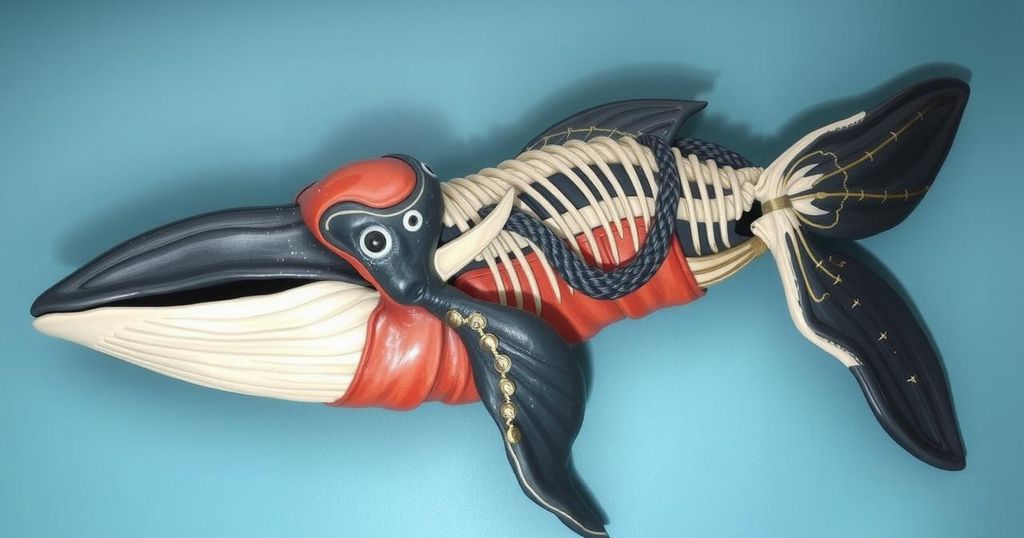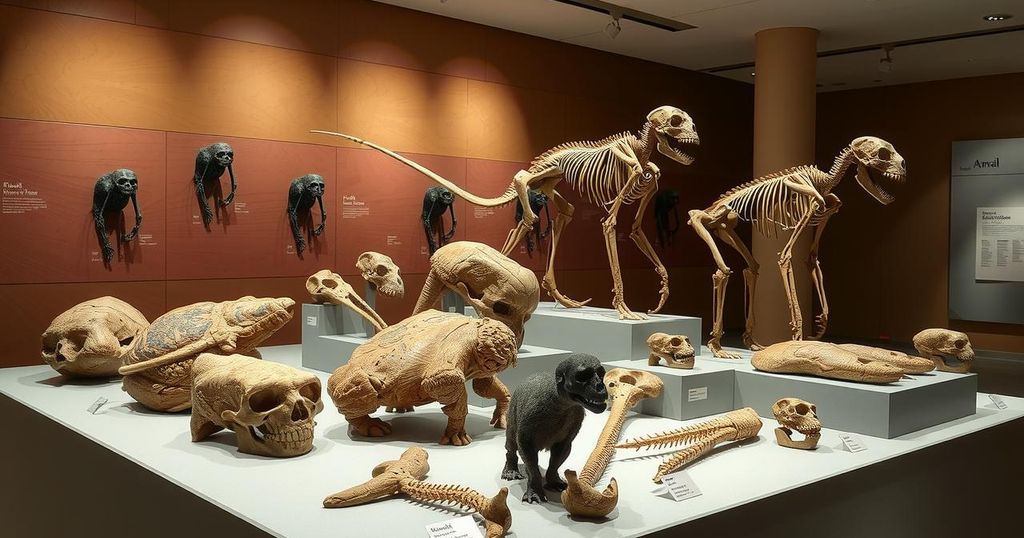Science
ANTON VAN HELDEN, AP, AUSTRALIA, CUBA, DEPARTMENT OF CONSERVATION, DUNEDIN, FOSSIL DISCOVERY, GOFUNDME, IWI, MELBOURNE, MENTAL HEALTH, NEW ZEALAND, NEW ZEALAND CONSERVATION AGENCY, NEW ZEALAND DEPARTMENT OF CONSERVATION, NORTH AMERICA, OCEANIA, SCIENCE, SOUTH ISLAND, TE RŪNANGA ŌTĀKOU, VAN HELDEN, WILDLIFE
Liam Kavanagh
0 Comments
Scientists Uncover Tragic End of the World’s Rarest Whale in New Zealand
Scientists suggest that the rare spade-toothed whale found on a New Zealand beach died from head injuries. The 5-meter specimen is the first complete whale of its kind ever recorded. The dissection revealed unique stomach contents and vestigial teeth, while highlighting the integration of Indigenous Māori customs into scientific study. Local iwi will preserve parts of the whale as a taonga, honoring the cultural significance of marine life.
In a remarkable and somber discovery off the coast of New Zealand, scientists have determined that the world’s rarest whale, the spade-toothed whale, likely succumbed to head injuries. This extraordinary event follows the first-ever dissection of a 5-meter male specimen that was found washed ashore in July, making it the only complete specimen ever documented. Experts from the local iwi, Te Rūnanga Ōtākou, collaborated closely with scientists at a research facility near Dunedin to examine this enigmatic creature, emphasizing a blend of scientific procedure with deep respect for Indigenous customs.
Upon conducting the dissection, believe it was head trauma that led to the whale’s demise. The whale bore visible signs of damage, including a fractured jaw and bruises enveloping its head and neck, hinting at a tragic fate sealed by an unknown cause. “We suspect there must have been some sort of trauma,” said Anton van Helden, a beaked whale expert. Such findings add to the mystery surrounding these elusive creatures, with only seven recorded sightings in history and none of a living spade-toothed whale.
Delving further into the whale’s biology revealed unique insights; nine stomach chambers were filled with squid remnants and parasitic worms, showcasing its feeding habits. Perhaps even more fascinating were the tiny vestigial teeth discovered in the whale’s upper jaw, which elucidate evolutionary connections. “This tells us something about their evolutionary history,” van Helden remarked in delight.
This journey extended beyond mere scientific exploration; it weaved together the cultural heritage of the Māori, as local tribes were integral in the dissection process and will keep the whale’s jawbone and teeth. To them, the whale represents a taonga—an emblem of treasure and reverence, akin to an ancestor. The skeleton of the whale will be preserved for public display using modern replication methods, ensuring ongoing connections between past, present, and future.
New Zealand’s coastline is notorious for whale strandings, with history marking over 5,000 occurrences since 1840. The first bones of a spade-toothed whale were identified in 1872, illuminating the rare lineage of these remarkable marine mammals. This exceptional event ignites a spark, a new chapter in the storytelling of the ocean’s most mysterious inhabitants.
The discovery of the spade-toothed whale specimen opens a new window into the world of beaked whales, which remain among the most elusive marine creatures. These are not just rare but shrouded in mystery, with scant data available due to the limited number of encounters; previously, only seven sightings had been documented. The importance of such findings extends beyond biological curiosity, as it intertwines with local culture and the Māori respect for marine life, which is celebrated and treated as ancestors within their traditions.
This unprecedented exploration into the spade-toothed whale not only enhances our biological understanding of this rare species but also fosters an appreciation for Indigenous practices and beliefs surrounding marine wildlife. The collaboration between scientists and local iwi emphasizes the deep respect for these creatures, further elevating their significance in both science and culture. As we glean more insights from this fascinating whale, it draws us into a deeper narrative about evolution, survival, and the intricate ties we share with the marine world.
Original Source: www.usnews.com




Post Comment